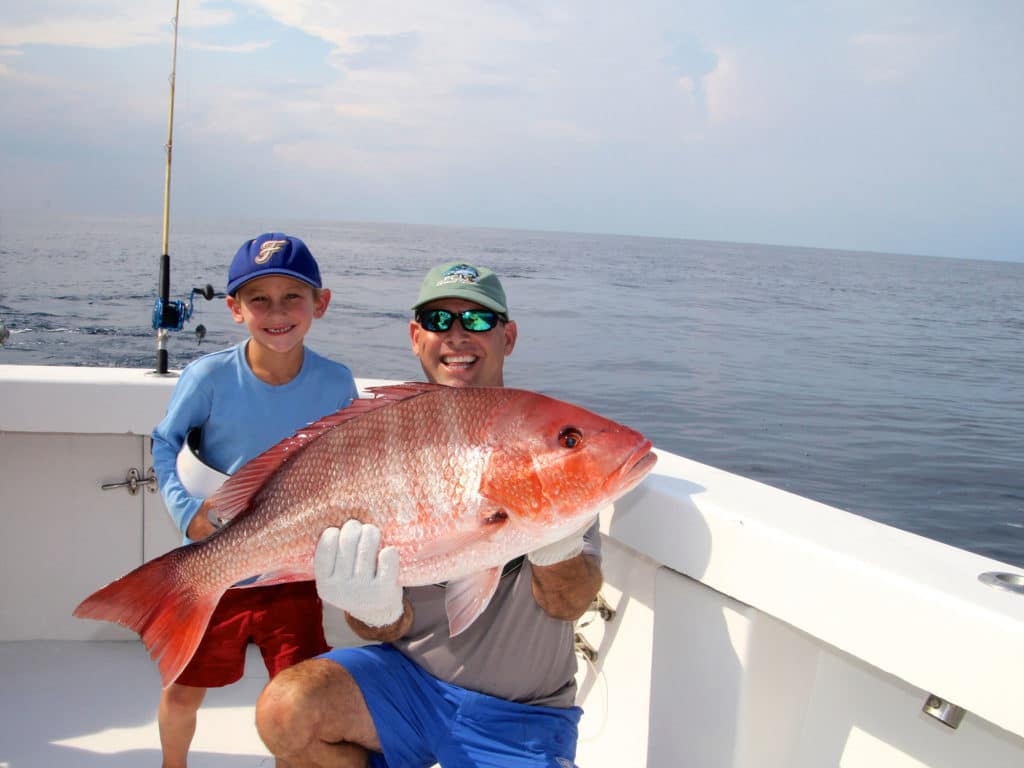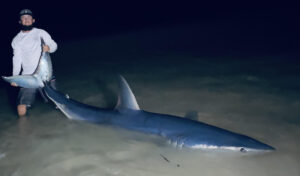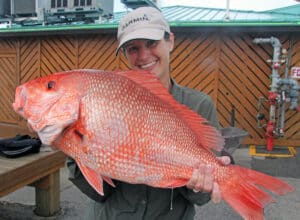
The Alabama Department of Conservation and Natural Resources (ADCNR) reports that a federal NOAA decree made on Dec. 1 will reduce Alabama’s recreational angler allotment for 2023 by 51 percent.
The federal quota reduction will drop Alabama’s red snapper recreational angler harvest from the 1,122,662 pounds allowed in 2022, to 558,200 pounds in 2023.
Scott Bannon, Director of Alabama’s Marine Resources Division, says the quota reduction by NOAA stems from the differences in red snapper harvest estimates between the federal government and Alabama’s red snapper data compilation.
The NOAA quota was calculated using the federal survey estimates.
However, Alabama’s quota has been monitored since 2018 using the state’s popular and effective data collection program called “Snapper Check.”
“Each Gulf state is accounting for their recreational harvests using different data programs from what the federal government is using,” says Bannon. “Under the rule that created state management of red snapper in 2018, there was a requirement to align the landings into the same calibration method. Alabama and Mississippi have very accurate reporting systems, and we feel the harvest estimates from NOAA are inflated and unreasonable.
“Since before state management of red snapper was initiated, we pushed the Gulf of Mexico Fishery Management Council (Gulf Council) that we should manage the amount of fish (taken) off each state. From Alabama’s perspective, this is in part due to the investments made by the state and private individuals in artificial reef building from which a significant number of red snapper and other reef species are produced in Alabama’s reef zones.”
Alabama has the largest artificial reef zone in America with about 1,100 square miles designated for habitat enhancement.
Since 2012, the population of red snapper and other popular reef fish have been monitored through research from the University of South Alabama’s School of Marine and Environmental Sciences.
“Utilizing the abundance estimates we receive from the University of South Alabama each year, nearly 25 percent of the red snapper off Alabama live among artificial reefs, and we think our red snapper stock is continuing to replenish itself at a sustainable rate.” Says Bannon. “We feel very strongly that in the Alabama reef zone the stock is very stable. Recruitment is good as there are enough young fish moving up through the reef system.”
“I’m disappointed with the (federal) allowable catch limit (ACL) set so far below the overfishing limit,” Bannon said. “I think the ACL could have been set a little higher, which would have given opportunities to all three sectors – commercial, for-hire (charter boats) and private recreational anglers.
“Fortunately, with the state system, people understand they can wait for a better (weather) day and fish when it works well for them. They are not pressured to go the way they did when the seasons were very short.”
Read Next: Stop The Madness: Federal Regulations May Increase Red Snapper Limits for Some Gulf State Fishermen
Alabama anglers still have the opportunity to catch red snapper for Christmas because the season of Friday-Monday weekend openings will continue until midnight on Saturday, December 31.
“Now that the football regular season is over and the deer aren’t moving, you can go fishing,” he said. “The rut won’t happen until January or February, so go fish a few days.”








